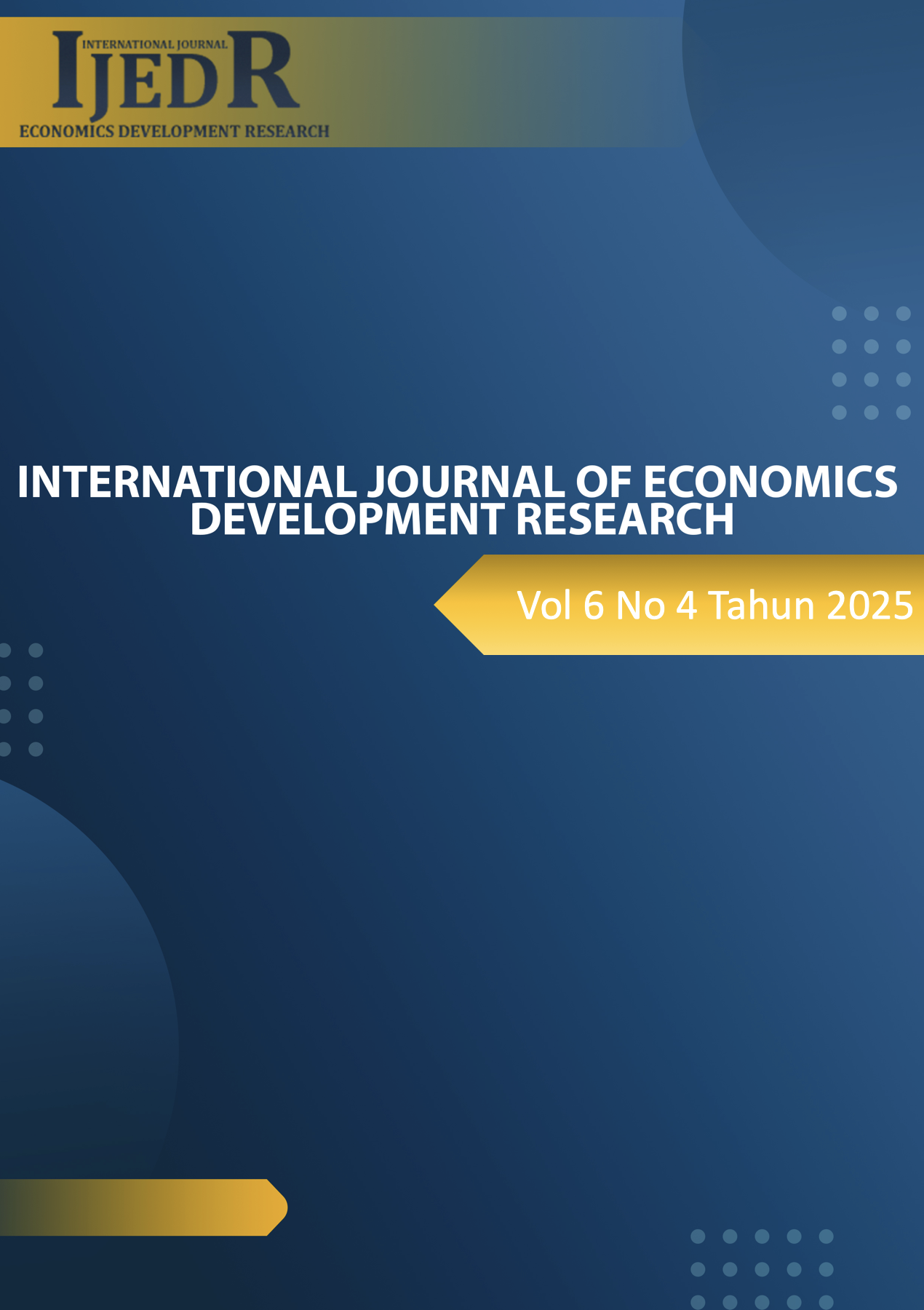Optimizing Coal Transportation Modes in Jambi Province: Strategic Decision-Making Using Integrated FAHP-Fuzzy TOPSIS
DOI:
https://doi.org/10.37385/ijedr.v6i4.7889Keywords:
Coal Transportation, Multi-Criteria Decision Making, Fuzzy AHP, Fuzzy TOPSIS, Jambi Province, Transportation OptimizationAbstract
The process of this research is to integrate the Fuzzy Analytic Hierarchy Process (FAHP) method and the Fuzzy Technique for Order Preference by Similarity to Ideal Solution (Fuzzy TOPSIS) by creating a strategic decision-making framework to optimize coal transportation modes in Jambi Province, Indonesia. An analysis of the inefficiency of coal transportation in Jambi was conducted due to the failure to achieve production targets, which were only 44-50% of the target set for 2022 and 2023.A thorough analysis has been conducted to determine both the criteria and sub-criteria for evaluating alternative coal transportation modes, starting from trucks using dedicated coal routes, combinations of trucks with dedicated coal trains, combinations of trucks with barges, and combinations of trucks with conveyors and barges. Underpinned by strong methodology controlling evaluation discrepancies and guaranteeing study validity, the approach included expert opinions from 25 stakeholders spanning government, industry, academia, and community sectors. Results reveal that at 38.5%, transportation costs are the most significant element; environmental impact follows at 27.3%; safety concerns at 19.8%; and time efficiency at 14.4%. Based on the analysis results, both through criteria weighing and testing against alternatives, it was found that the best mode of transportation is trucks using the special coal road. And it is recommended to consider the level of operational efficiency, reduction of environmental impact, and increasing regional competitiveness compared to other regions by selecting the most effective and strategic mode of transportation.
References
Awasthi, A., Chauhan, S., & O., H. (2011). Application of fuzzy TOPSIS in evaluating sustainable transportation systems. Expert Syst. Appl., 38, 12270–12280. https://doi.org/10.1016/j.eswa.2011.04.005
Belanina, E. (2013). Multimodal Coal Transportation in Indonesia. 113.
Gül, M., Guneri, A., & Nasirli, S. (2018). A fuzzy based model for risk assessment of routes in oil transportation. International Journal of Environmental Science and Technology, 16. https://doi.org/10.1007/s13762-018-2078-z
Haddad, A. N., da Costa, B. B. F., de Andrade, L. S., Hammad, A., & Soares, C. A. P. (2021). Application of fuzzy-topsis method in supporting supplier selection with focus on hse criteria: A case study in the oil and gas industry. Infrastructures, 6(8). https://doi.org/10.3390/infrastructures6080105
Kabashkin, I. (2023). Model of Multi Criteria Decision-Making for Selection of Transportation Alternatives on the Base of Transport Needs Hierarchy Framework and Application of Petri Net. Sustainability (Switzerland), 15(16). https://doi.org/10.3390/su151612444
Kaewfak, K., Huynh, V.-N., Ammarapala, V., & Charoensiriwath, C. (2019). A Fuzzy AHP-TOPSIS Approach for Selecting the Multimodal Freight Transportation Routes (pp. 28–46). https://doi.org/10.1007/978-981-15-1209-4_3
Kahraman, C., Cebeci, U., & Ulukan, Z. (2003). Multi?criteria supplier selection using fuzzy AHP. Logistics Information Management, 16(6), 382–394. https://doi.org/10.1108/09576050310503367
Kusumawardani, R. P. (2015). Application of Fuzzy AHP-TOPSIS Method for Decision Making in Human Resource Manager Selection Process. In Procedia Computer Science (Vol. 72, pp. 638–646). https://doi.org/10.1016/j.procs.2015.12.173
Li, P., Yu, H., Zhang, J., Du, M., & Xiong, J. (2021). Coal Supply Sustainability in China: A New Comprehensive Evaluation Methodology. Frontiers in Energy Research, 9(December), 1–19. https://doi.org/10.3389/fenrg.2021.701719
Liu, Q., Peng, L., Liu, W., & Zhang, B. (2023). Optimization of coal procurement and transportation decisions based on improved genetic algorithm. Journal of Physics: Conference Series, 2422(1), 0–11. https://doi.org/10.1088/1742-6596/2422/1/012015
Ma, Q., Wang, W., Peng, Y., & Song, X. (2018). An optimization approach to the intermodal transportation network in fruit cold chain, considering cost, quality degradation and carbon dioxide footprint. Polish Maritime Research, 25(1), 61–69. https://doi.org/10.2478/pomr-2018-0007
Mishra, R. (2021). A hybrid multi-criteria decision-making approach to assess the enablers of manufacturing flexibility under fuzzy environment. International Journal of Quality and Reliability Management, 38(4), 955–985. https://doi.org/10.1108/IJQRM-03-2020-0075
Moslem, S. (2023). A Systematic Review of Analytic Hierarchy Process Applications to Solve Transportation Problems: From 2003 to 2022. IEEE Access, 11, 11973–11990. https://doi.org/10.1109/ACCESS.2023.3234298
Wang, X., Dong, X., Zhang, Z., & Wang, Y. (2024). Transportation carbon reduction technologies: A review of fundamentals, application, and performance. Journal of Traffic and Transportation Engineering (English Edition), 11(6), 1340–1377. https://doi.org/10.1016/j.jtte.2024.11.001
Yucekaya, A. (2015). Managing Fuel Coal Supply Chains With Multiple Objectives and Multimode Transportation. Engineering Management Journal, 25, 58–70. https://doi.org/10.1080/10429247.2013.11431966





